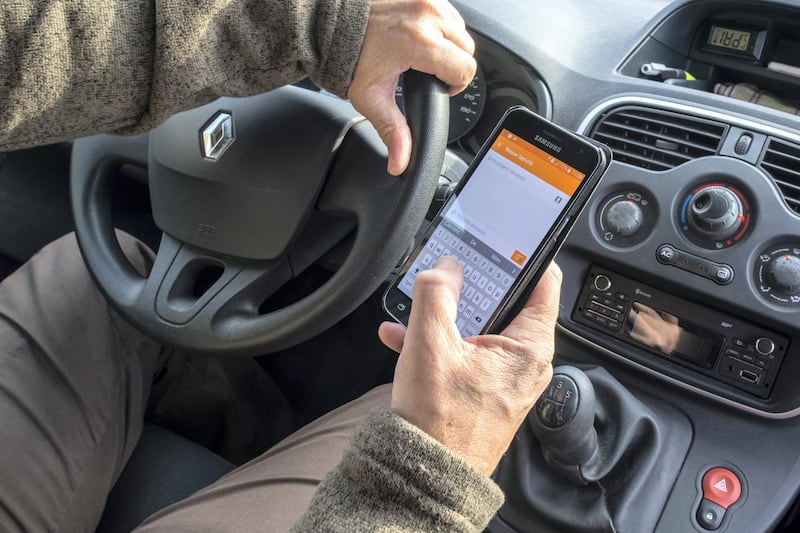“Taking your eyes off the road too long or too often could cause a crash, resulting in injury or death to you or others. Focus your attention on driving.”
In light of the 3,500 lives lost on the road globally every day, this message makes a lot of sense. The way it was delivered to me, however, is problematic. As I was overtaking a car on a US highway, it flashed up on the large dashboard screen of a rental car I was driving. I couldn’t help but check it and this distraction while I was speeding up could have led to a car accident.
Most new vehicles come with driving assistance systems such as global positioning, anti-braking, anti-collision radars, cruise control or self-parking features. All of them aim to improve the driver's experience and safety.
But there are unintended consequences to intelligent assistance in our cars. Distracting auditory and visual updates prevent a driver's brain from being fully focused on the road. On top of this, people who are constantly provided with help and assistance have a natural tendency to pay less attention to their main task. So if the car’s computer is taking care of things, why should we pay attention?
In a lot of countries, texting while driving – today the cause of a quarter of accidents in the US alone – is illegal and punishable by fine. And yet dangerous distractions provided by onboard assistance systems, such as the message that appeared while I was driving, are totally legal.
Fortunately, data collected by portable eye-tracking systems and brain scanners allows us to use cognitive and neurotechnologies to see where people are looking and whether they are paying attention.
Drivers' associations, car manufacturers, insurance companies and public authorities are becoming increasingly concerned about distracted driving, as illustrated by a recent report from the Organisation for Economic Co-operation and Development (OECD), which identified the rise of distracted driving as one of its top four road safety trends.
One of the key issues is the lack of standardised data collection and processing to monitor distraction behind the wheel – a concern shared by the Federation Internationale de l’Automobile (FIA), the world motorsport governing body and a leading promoter of road safety.
____________________
Read more from Olivier Oullier:
[ It might be too late to help Avicii but technology can help treat depression ]
[ Could your morning cup of joe be considered a performance-enhancer? ]
[ Neurotechnology can tell us plenty about our performance in sports ]
____________________
Under the presidency of Jean Todt, who is also the UN secretary general's special envoy for road safety, the FIA, in collaboration with my company Emotiv and the Institut du Cerveau et de la Moelle Epiniere (Brain and Spine Institute) has launched an innovative research and development programme called #Tech4roadSafety.
Mr Todt says: “Saving lives requires us to be at the forefront of scientific and technological innovation. Neurotechnologies and neuroinformatics provide unprecedented insights to address distracted driving, a significant and rising cause of death on the road.”
Last week I attended the International Transport Forum’s summit on transport safety and security in Leipzig, Germany, held under the umbrella of the OECD, where the organisation’s annual summit of transport ministers also took place. The ministers highlighted innovation and new technologies as a key for safer and more secure transport.
Many participated in an experience that we designed with the FIA team: a virtual reality and neurotech driving simulator allowing us to manipulate environmental parameters that can distract drivers. Brainwaves were monitored to show in real time how simple changes in the driving environment can negatively impact driver attention.
Combined with real life brain data collected from drivers on roads and highways, we are able to inform policymakers and insurance companies about the intrinsic level of distraction of each car.
Recently, it was announced that Dubai’s Roads and Transport Authority (RTA) has started deploying video cameras in 6,500 affiliated taxis to monitor the behaviour of drivers. The next step could be for RTA to use neurotechnologies to directly measure stress, distraction and fatigue, something that cameras cannot do.
The 26th World Road Congress will be held in Abu Dhabi next year. By then, we will have made significant progress towards a standardised test to measure driver distraction related to car design and assistance. Car safety will no longer solely be assessed from its crash test results. Unsurprisingly, insurance companies are planning to use our results to modulate the pricing of their premiums.
Ultimately, our work will also provoke hardware and app solutions to measure fatigue and alertness as quickly and conveniently as a breathaliser.
The early results are in: neurotech certainly makes our roads safer.
Professor Olivier Oullier is the president of Emotiv, a neuroscientist and a DJ. He served as global head of strategy in health and healthcare and member of the executive committee of the World Economic Forum






